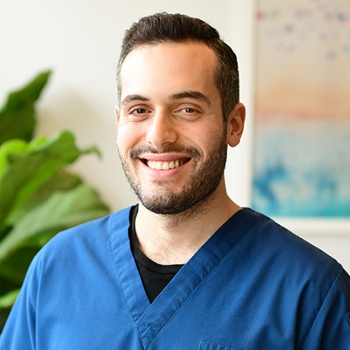Dental exams and cleaning should be a regular part of your oral healthcare routine. The Canadian Dental Association (CDA) recommends that you visit your dentist for these appointments at least twice annually.
Regular cleanings typically take anywhere from 30–60 minutes, on average. But if your dentist discovers periodontitis (gum disease), they may recommend a deep cleaning that could add an additional hour or more.
It’s hard to pinpoint an exact time frame because it relies on how much cleaning your mouth requires. Your dentist can likely give you a much more precise time frame based on their exam of your mouth. If they determine a deep cleaning is necessary, you may be scheduled for a follow-up appointment dedicated to the cleaning.
What Is Deep Cleaning?
A deep cleaning typically follows a similar format to a standard cleaning; the dental hygienist will clean and polish your teeth, and your dentist will likely examine them as well. However, root planing is typically one of the significant extra steps during deep cleaning, not regular cleaning.
Because of the extra step and work involved in deep cleaning, the procedure is often split into 2 separate appointments.
Tooth Scaling
It’s common for the dental hygienist to perform a tooth scaling during a routine cleaning. This includes the process of using a manual or ultrasonic scaler to remove tartar buildup from above your gum line.
This is as much scaling as can be done in a healthy mouth because the gums are typically tight to each tooth and prevent the hygienist’s tools from reaching below the gum line. If your dentist recommends a deep cleaning appointment, it usually includes tooth scaling and root planing.
Root Planing
Gums are often inflamed and puffy around your teeth when they are affected by gum disease. During the root planing, your dental hygienist will use the same or a similar tool they used for tooth scaling.
The gums are gently pushed aside (after a local anesthetic is applied or injected), and the hygienist chips away tartar buildup until the tooth and its roots are smooth. An antibiotic may be injected into the affected gum pockets in some cases.
What Leads to a Deep Cleaning Appointment at the Dentist?
You may have noticed that we mentioned you couldn’t get root planing done with healthy gums. Red, swollen gums may begin pulling away from the teeth.
When your dentist performs a dental exam, gum disease is one of the things they are often looking for, along with cavities or the beginning of tooth decay.
What Is Periodontitis?
We’ve talked a lot about periodontitis or gum disease until now, and you may be wondering what exactly it is.
Gum disease is an infection of the tissue holding your teeth in place. It’s caused by a buildup of bacteria on your teeth and gums. The initial symptoms are typically red, swollen or puffy gums and bleeding.
One thing to remember is that periodontitis isn’t always painful, so it’s essential to see the dentist regularly, to help catch it early. There isn’t a cure for gum disease other than removing the source of the infection, so early intervention is key.

Preventing Periodontitis
As with many things that affect our bodies, prevention is the best route—if possible. One of the primary things that can lead to gum disease is poor oral care habits. Regular brushing and flossing help prevent the sticky bacteria growth called plaque from building up on our teeth and below the gum line.
If plaque is left for 24–36 hours, it hardens into tartar. And the buildup of tartar is what can lead to gum disease.
Proper brushing and flossing techniques, laid out by the CDA, are:
- Brushing for at least 2 minutes twice daily, ideally after every meal.
- Flossing at least once daily but ideally after every meal.
- Mouthwash can be a great addition to brushing and flossing. But it should never replace either of them.
Discuss Your Options With Your Dentist
Diligence in your oral hygiene routine is critical to healthy teeth and gums. But regular visits to your dentist are a part of this routine that shouldn’t be avoided. And if you’re noticing some of the signs of gum disease, such as swollen or bleeding gums, it’s essential to see your dentist.Even if it’s been a while, the team at Marks Dentistry is here to support your oral health as best we can. Give us a call today, and we’ll book you an appointment with one of our dentists to see if a deep clean might be the best approach to get your teeth and gums looking and feeling great.




